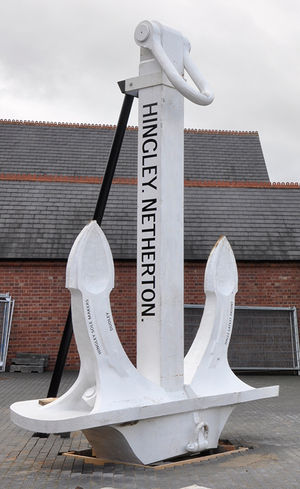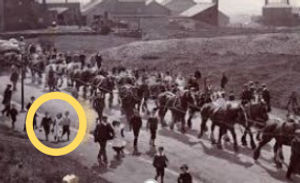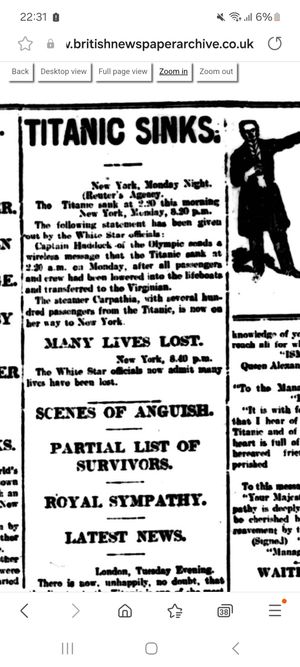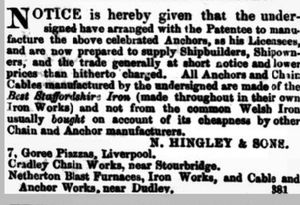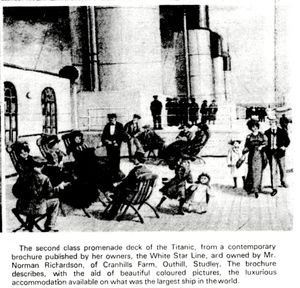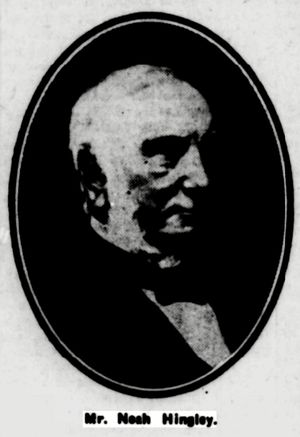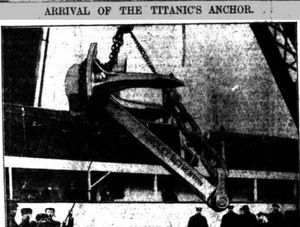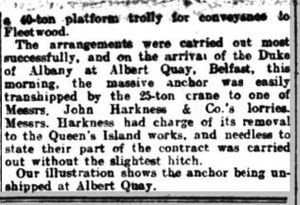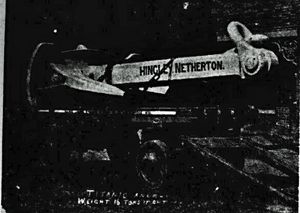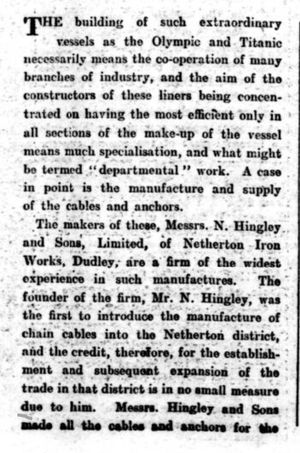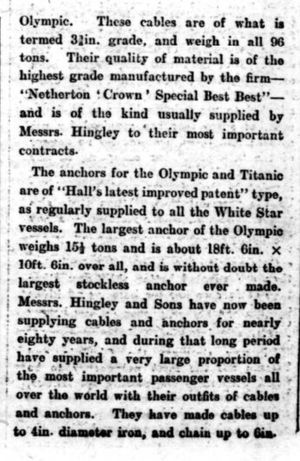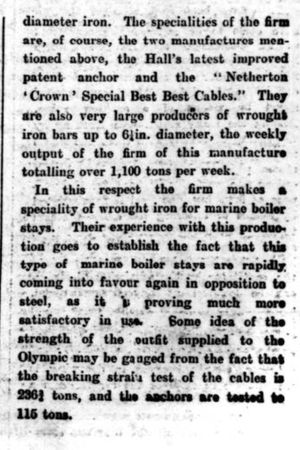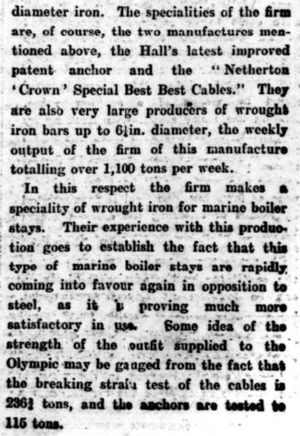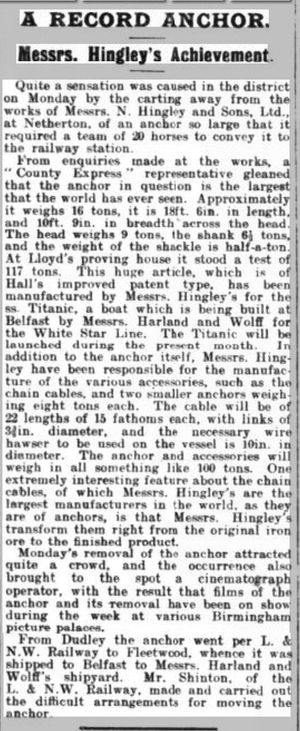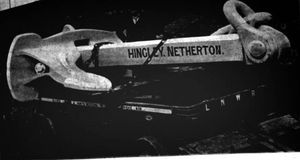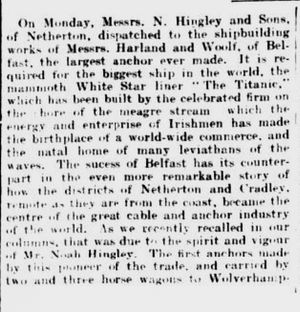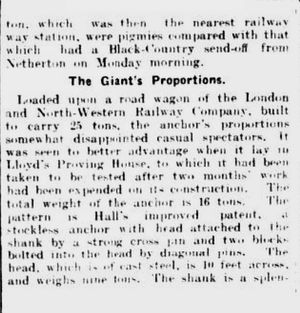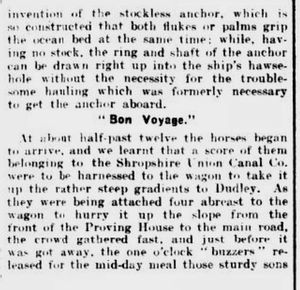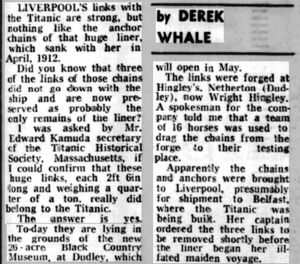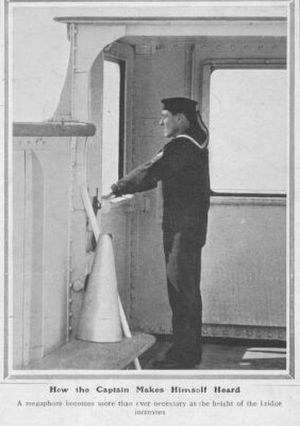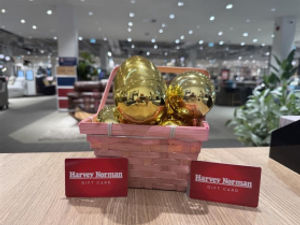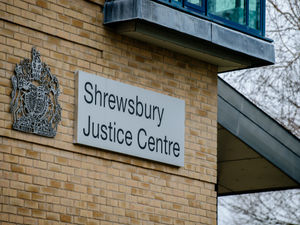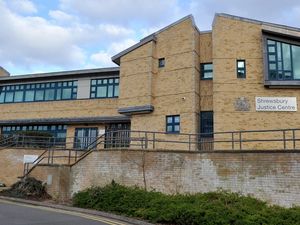Titanic's anchor: A remarkable part of Black Country history
Twenty shire horses pulled the world's biggest anchor – weighing a massive 16 tons – from the very beginning of its historical journey in the heart of Netherton.
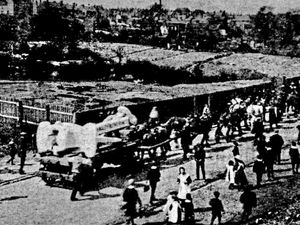
It's Monday, May 1, 1911. Curious onlookers lined the streets of the Black Country and the air was buzzing with excitement and anticipation.
Little did they know that this marked the start of one of the most famous tragedies in modern history.
The anchor, which measured18ft, six inches in length and 10ft across, was made the for the Titanic at a firm in the heart of the Black Country.
Keen historian and self-professed ‘history influencer’ Sarah Haywood, who works as a teaching assistant at Brierley Hill Primary School, has been researching the story of the- then 'world's biggest anchor' and is sharing her finds from the British Newspaper Archives with Express & Star readers.
The mum-of-two, who runs the West Midlands Historic Chronicles - The Black Country and Beyond Facebook group, said: "Just imagine the hustle and bustle of that day, when 20 shire horses pulled the world's biggest anchor through Netherton. The streets were filled.
"It's incredible to think about the sheer effort and coordination it would have taken to move the anchor."
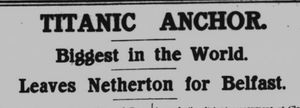
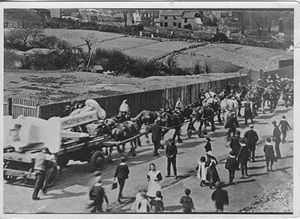

Remarkable part of Black Country history
The hefty weight was loaded onto a wagon and pulled through roads lined with curious onlookers. The destination was Dudley Railway Station. This was where the train responsible for transporting the anchor to Fleetwood, Lancashire awaited.
It was loaded onto to a 40-ton platform trolley before it arrived at the Titanic in Belfast on Friday morning at 5.30am on the R.M.S Duke of Albany.
The journey would take the anchor through Netherton High Street, to Cinder Bank, onto Dudley town centre and down towards Tipton Road and the goods yard.
Its final journey to the shipyard was again pulled by horses.
An article reported on the arrival of the anchor to Belfast. It read:
"The 16-ton anchor for the new white star liner Titanic arrived in Belfast on Friday morning at 5:30am aboard the R.M.S.Duke of Albany, one of the fine steamers of the Fleetwood line, under the command of Captain J.P. Hall.
"The anchor, which was made by Messrs.N Hingley &sons Ltd Netherton Iron Works, Dudley (who are the sole makers of this type), measures 18ft. 6in. In length and 10 ft 1/2inch across the flanges.
"The head is of cast steel and the other parts are forged steel and a dozen men were occupied for three weeks at its construction.
"The breaking strain of this massive casting is incalculable. The head weighs nine tons, the shank six and a half tons and the shackle half a ton; while the cable,which was also carried to Belfast via Fleetwood, consists of 22 lengths of chain, the links which are three in diameter.
"The London and North-Western Railway Co's team of 16 horses carted the huge casting to Dudley Railway Station and it was loaded on a 40-ton platform trolley for conveyance to Fleetwood.
"The arrangements were carried out most successfully and on the arrival of the Duke of Albany at Albert Quay, Belfast, this morning, the massive anchor was easily transhipped by the 25-ton crane to one of the Messrs, John Harkness & Co's lorries. Messrs Harkness had charge of its removal to the Queens Island works and needless to state their part of the contract was carried out without the slightest hitch."
The Dudley Chronicle also reported the spectacle of the 16-ton anchor, destined for the White Star “Titanic” ocean liner, beginning its journey from Netherton to Belfast.
The report read: “With sunshine glinting on harness and lighting up the festive ribbons, the horses responded gallantly to the call, and amid a scene of great animation, the white-coated giant left its Midland home to join the enterprise and the perils of those that go down to the sea in ships, and to carry across mighty oceans the evidence of the prowess of the workers of South Staffordshire.”
As the horses, adorned with May-Day decorations, were being attached to the dray, onlookers began to gather, “until a crowd of a thousand actually witnessed the anchor’s departure”, according to the Dudley Chronicle.
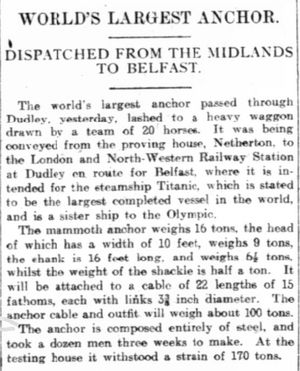
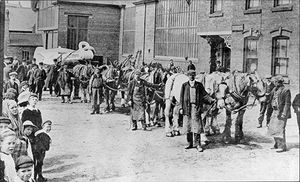
'The world's largest anchor'
It's funny to think that the landlocked Black Country was at the heart of anchor and marine chain manufacturing since the 1840s.
Noah Hingley & Sons Ltd, Netherton Ironworks, was one of the leading companies. According to research by the Black Country Living Museum (BCLM), it had made anchors for the White Star shipping company before, for Titanic’s sister ship, the Olympic.
The Titanic anchor, however, was the largest they had made for what would be the largest ship in the world.
The Dudley Chronicle said the work was supervised by Mr Osborne, manager of the cable department at the Netherton works.
Scores of hard-working Black Country men worked hard forging over a thousand feet of chain for the ship.
However, Hingley’s was not responsible for making the whole of the anchor however.
Research by BCLM said Walter Somers Ltd, of Mucklow Hill, Halesowen, forged the shank of the centre anchor because they owned more powerful steam powered hammers. Rogersons Ltd, of Newcastle-upon-Tyne, also cast the huge steel head of the anchor.
Researchers at the museum said: "Hingley’s however, made the remaining parts and assembled the whole together, with the main anchor measuring 18 foot six inches long and 10 foot six inches wide.
"The first journey the anchor made was to the nearby Lloyd’s Proving House, where the anchor and cable were tested for strength and safety.
"Once the tests on the anchor and chain were satisfactorily completed, the anchor could begin its next journey, to the LNWR (London and North Western Railway) Goods Station in Tipton Road, Dudley."
The anchor wasn’t the only Titanic product made in the Black Country. Hingley’s also made two smaller anchors, at eight tons each.
Stuart Crystal of Wordsley crafted glassware decorated with the White Star Line badge, the davits for the lifeboat mechanisms were made by Welin Lambie in Brierley Hill, Thomas Perry & Son of Bilston manufactured safes and Palethorpes of Dudley Port were proud to supply 18 Ibs of their famous “Royal Cambridge” sausages.
Netherton's famous anchor hits worldwide headlines
The anchor’s journey to the shipyard in Belfast attracted public and media attention.
Photographers were positioned at every vantage point, including E Beech from Cradley Heath, whose images were later sold as postcards. Beech had also famously captured images of Mary Macarthur’s visit to Cradley Heath in 1910 to support the women chainmakers strike.
Mr G B Fraser, manager of the Provincial Cinematograph Theatre in New Street, Birmingham, also captured “living pictures” of the works, horses and people. The footage has since been lost.
According to the Dudley Chronicle the film footage was well received by cinema goers, especially finding the “spurt of the horses up the slope a stirring spectacle”.
Despite, Netherton's anchor being a spectacle in its own right - of course, the sinking of the Titanic on its maiden voyage in 1912 over took any previous publicity.
The wreckage of the Titanic was only discovered on the seabed in 1985, 73 years after the ship sank, with underwater footage revealing the main anchor, still fixed on the bow.
A link to the anchor remains on land however. A lifesize replica of the anchor arrived at BCLM in 2010. It was part of a Channel 4 Documentary which relived the journey of the Black Country folk who made the anchor. It was on display at the museum for a year and now permanently resides in Netherton.
